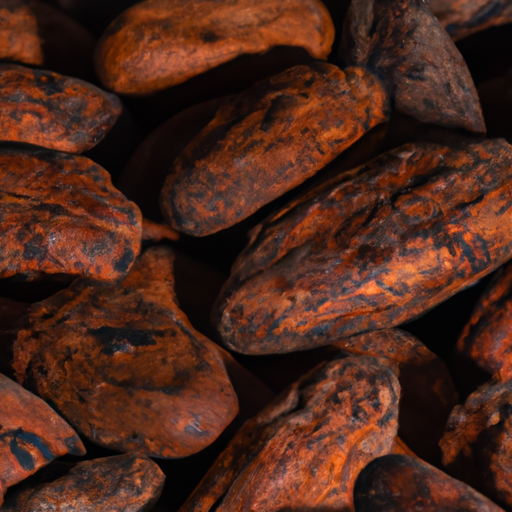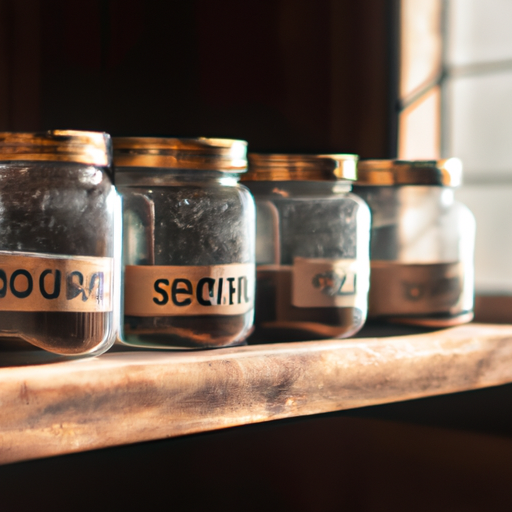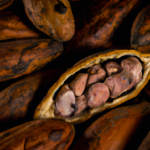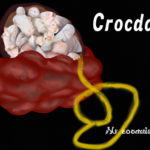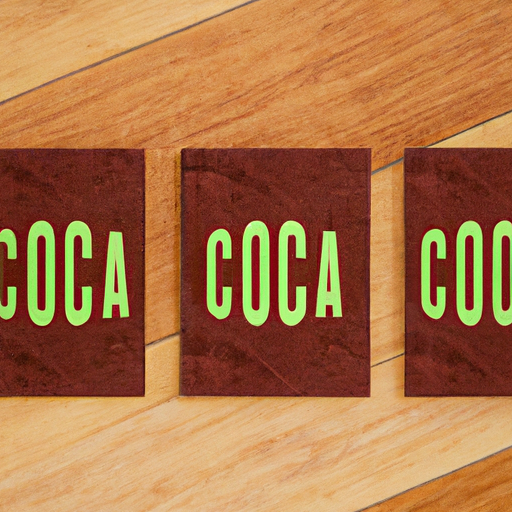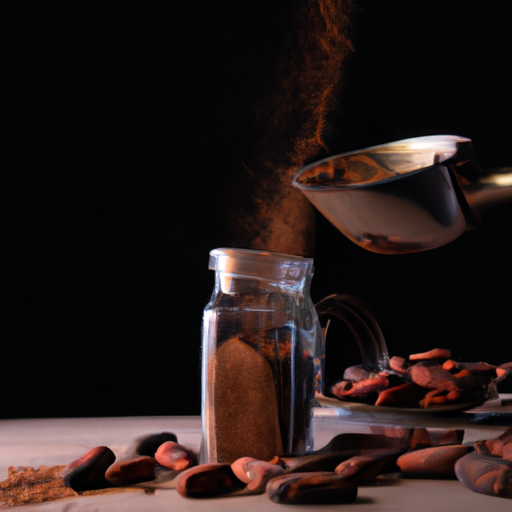Did you realize that consuming raw cacao properly can offer a natural mood booster? It’s true! As someone who is constantly seeking out natural methods to enhance my mood and overall wellness, I was intrigued to learn about the link between raw cacao and its uplifting effects.
In this article, we will delve into the origins of raw cacao, its chemical components, and how it affects our brain chemistry. We will explore the relationship between raw cacao and endorphins, as well as its impact on serotonin levels.
Additionally, we will uncover the role of flavanols in raw cacao and ways to incorporate it into our diet. Finally, we will discuss the potential health benefits of raw cacao and any precautions or considerations we should keep in mind.
Get ready to dive into the world of raw cacao and explore its incredible potential for enhancing our mood and overall happiness.
The Origins of Raw Cacao
Imagine yourself walking through a lush tropical rainforest. Vibrant cacao trees with glossy, dark green leaves stretch towards the sky. The intoxicating aroma of raw cacao beans fills the air.
The history of raw cacao cultivation dates back thousands of years. Ancient civilizations such as the Mayans and Aztecs cultivated cacao. They revered it as a sacred plant, using it for medicinal purposes and as a currency.
Raw cacao held immense cultural significance. It symbolized wealth, power, and divine connection. The preparation of raw cacao involved a meticulous process. It started with harvesting the pods and then fermenting and drying the beans.
These traditions have been preserved and passed down through generations. They ensure the integrity and quality of raw cacao. Understanding the rich history and cultural significance of raw cacao allows us to appreciate its chemical components and their potential effects on our bodies.
The Chemical Components of Raw Cacao
When you delve into the world of raw cacao, you’ll discover a tantalizing array of chemical compounds that bring about delightful sensations.
Raw cacao contains a number of active compounds, including theobromine, phenylethylamine, and anandamide. These compounds interact with the brain and body to produce various chemical reactions and effects.
Theobromine, for example, acts as a mild stimulant and can increase heart rate and improve mood. Phenylethylamine is known as the ‘love chemical,’ as it can enhance feelings of joy and euphoria. Anandamide, on the other hand, is a neurotransmitter that activates the same receptors as THC, the compound found in cannabis.
In addition to these chemical reactions, raw cacao also offers various nutritional benefits, such as being rich in antioxidants, minerals like magnesium and iron, and flavonoids that can promote heart health.
Understanding the chemical components and nutritional benefits of raw cacao sets the stage for exploring the relationship between raw cacao and endorphins.
The Relationship Between Raw Cacao and Endorphins
Indulging in the velvety goodness of raw cacao can instantly transport you to a state of bliss, as it triggers the release of endorphins, those natural feel-good chemicals in your brain.
Endorphins are neurotransmitters that bind to opioid receptors, reducing pain and promoting feelings of pleasure and happiness. Studies have shown that consuming raw cacao can increase endorphin levels, leading to a sense of euphoria and stress relief. These mood-enhancing effects can help improve overall well-being and promote a positive outlook on life.
Raw cacao contains several compounds that contribute to its ability to boost endorphin levels. One key component is phenylethylamine, a compound that stimulates the release of endorphins and enhances mood. Additionally, the high antioxidant content in raw cacao helps reduce oxidative stress, which can contribute to feelings of anxiety and depression.
As we explore the impact of raw cacao on our brain chemistry, it’s important to consider its relationship with serotonin levels.
Raw Cacao and Serotonin Levels
Savoring the velvety deliciousness of raw cacao sends a surge of bliss through your body, as it triggers the release of serotonin, the happiness hormone. Serotonin plays a crucial role in mood regulation, and low levels of this neurotransmitter have been linked to conditions like depression and anxiety. Raw cacao contains certain compounds that can increase the production and availability of serotonin in the brain, leading to improved mood and overall well-being. In fact, research has shown that consuming raw cacao can enhance mood and reduce symptoms of depression. Additionally, the flavanols found in raw cacao have been found to support brain health by improving blood flow and cognitive function. These beneficial effects on mood regulation and brain health make raw cacao a promising natural remedy. Moving forward, let’s explore the role of flavanols in raw cacao.
The Role of Flavanols in Raw Cacao
To fully appreciate the benefits of raw cacao, you can experience the invigorating effects of flavanols that boost brain health and enhance cognitive function.
Flavanols, a type of plant compound found abundantly in raw cacao, have been extensively studied for their positive impact on cardiovascular health. They help improve blood flow, lower blood pressure, and reduce the risk of heart disease.
Additionally, flavanols have shown promising effects on brain function. Research suggests that they can enhance cognitive performance, improve memory, and protect against age-related cognitive decline.
Furthermore, flavanols have been found to have antioxidant and anti-inflammatory properties, contributing to overall brain health.
By incorporating raw cacao into your diet, you can harness these benefits and promote both cardiovascular and brain health.
Now, let’s explore some ways to incorporate raw cacao into your diet.
Ways to Incorporate Raw Cacao into Your Diet
When it comes to incorporating raw cacao into my diet, I’ve found a few ways that work well for me:
-
Adding raw cacao powder to my smoothies and desserts is a delicious and nutritious option. It gives a rich chocolate flavor and provides a natural source of antioxidants and minerals.
-
Another way I enjoy using raw cacao is by using raw cacao nibs as a snack or topping for yogurt or oatmeal. They give a satisfying crunch and a burst of chocolatey goodness while also delivering a dose of beneficial nutrients.
These two methods have been my go-to ways to incorporate raw cacao into my diet, but there are plenty of other creative ways to enjoy this superfood. Experimenting with recipes and finding what works best for you is the key to incorporating raw cacao into your diet.
Raw cacao powder in smoothies and desserts
If you’re looking to add a healthy and delicious twist to your smoothies and desserts, try incorporating some raw cacao powder – it’s a game-changer!
Raw cacao powder is not only tasty but also packed with benefits. Here are three reasons why you should consider adding it to your recipes:
-
Boost of antioxidants: Raw cacao powder is rich in antioxidants, which can help protect your body against damage from free radicals.
-
Mood enhancer: This powder contains natural compounds like phenethylamine and anandamide, which can promote feelings of happiness and well-being.
-
Nutrient powerhouse: Raw cacao powder is a good source of essential minerals such as magnesium, iron, and zinc.
Incorporating raw cacao powder into your smoothies and desserts is a simple way to elevate their nutritional value and taste. Plus, it adds a delightful chocolatey flavor.
Now, let’s move on to the next section and explore how raw cacao nibs can be a great snack or topping option.
Raw cacao nibs as a snack or topping
Indulge your taste buds with the irresistible crunch and heavenly flavor of raw cacao nibs – they’re the perfect guilt-free snack or delectable topping that will transport you to chocolate heaven. Raw cacao nibs are small pieces of crushed cacao beans that offer a multitude of health benefits. Packed with antioxidants, fiber, and essential minerals like magnesium and iron, these little nibs can boost your overall well-being. You can enjoy them on their own as a snack or sprinkle them onto smoothies, yogurt, or desserts for an extra burst of flavor and texture. Not only do raw cacao nibs provide a rich chocolate taste, but they also offer a range of nutrients that support heart health, improve mood, and enhance cognitive function. In the next section, we will explore the potential health benefits of raw cacao and how it can positively impact your well-being.
Potential Health Benefits of Raw Cacao
One of the great things about raw cacao is its potential to offer a variety of health benefits.
Raw cacao is rich in antioxidants, which can help protect our cells from damage caused by harmful molecules called free radicals.
It also contains flavonoids, which have been associated with a lower risk of certain chronic diseases, such as heart disease and diabetes.
Additionally, raw cacao is a good source of minerals like magnesium, which is important for many bodily functions including muscle and nerve function.
Incorporating raw cacao into recipes can be a delicious way to reap these potential health benefits.
However, it’s important to note that while raw cacao can provide some health benefits, it should be consumed in moderation.
Too much raw cacao can lead to negative effects such as digestive issues or increased heart rate.
Precautions and Considerations
When it comes to consuming raw cacao, it’s important to keep in mind recommended dosage and moderation. It is suggested to consume no more than 2-3 tablespoons of raw cacao powder per day to avoid any potential negative effects.
Additionally, it’s important to be aware of potential side effects such as insomnia, jitteriness, and increased heart rate that may occur if consumed in excessive amounts.
Recommended dosage and moderation
For a truly blissful experience, finding the perfect balance of raw cacao can transport you to a world of euphoria and delight. When it comes to enjoying raw cacao for its potential effects, it’s important to consider the recommended dosage and moderation.
Here are some key factors to keep in mind:
-
Start with a low dosage: Begin with a small amount of raw cacao and gradually increase the dosage to assess your tolerance and sensitivity.
-
Consider your body weight and metabolism: Factors like body weight and metabolism can influence how your body responds to raw cacao. Adjust the dosage accordingly.
-
Pay attention to potential risks: While raw cacao can offer a range of benefits, consuming excessive amounts may lead to adverse effects such as increased heart rate or digestive issues.
Understanding the recommended dosage and moderation is crucial for a safe and enjoyable experience with raw cacao. However, it’s important to be aware of potential side effects that can occur if consumed in excess.
Potential side effects
Be mindful of the potential side effects that can arise from consuming too much of this indulgent treat. While raw cacao is generally considered safe, excessive consumption may lead to certain adverse effects. These side effects can range from mild discomfort to more severe symptoms. It is important to note that individual tolerance may vary, and it is crucial to listen to your body’s signals. To help you understand the potential side effects, I have prepared the following table:
| Side Effects | Long-Term Effects | Recommendations |
|---|---|---|
| Nausea | None | Consume in moderation and be aware of your body’s response. |
| Headaches | None | Stay hydrated and avoid consuming raw cacao late in the day. |
| Digestive issues | None | Start with small amounts and gradually increase intake. |
| Insomnia | None | Avoid consuming raw cacao close to bedtime. |
It is essential to remember that these side effects are not common, and most people can enjoy raw cacao without experiencing any negative effects. However, if any concerns arise, it is always advisable to consult with a healthcare professional. Now, let’s explore the potential of raw cacao in the conclusion.
Conclusion: Exploring the Potential of Raw Cacao
So, you’re really convinced that eating raw cacao is going to take you to the moon and back, huh? While raw cacao does have some potential therapeutic effects for mental health, it’s important to approach it with caution. Here are some key points to consider:
-
Antioxidant properties: Raw cacao contains high levels of antioxidants, which may have a positive impact on brain health and mood regulation.
-
Neurotransmitter modulation: The presence of certain compounds in raw cacao, such as phenylethylamine and anandamide, may influence neurotransmitter activity, potentially promoting feelings of well-being.
-
Anti-inflammatory effects: Chronic inflammation has been linked to mental health disorders, and raw cacao’s anti-inflammatory properties may offer some benefits in this regard.
-
Magnesium content: Raw cacao is a good source of magnesium, which plays a crucial role in stress reduction and relaxation.
-
Individual variability: It’s important to note that the effects of raw cacao can vary from person to person, and excessive consumption may lead to unwanted side effects.
While raw cacao shows promise in exploring its potential therapeutic effects for mental health, more research is needed to fully understand its benefits and optimal dosage. As with any dietary change, it’s always best to consult with a healthcare professional before making significant adjustments.
Frequently Asked Questions
Can consuming raw cacao lead to a psychoactive or "high" effect?
Consuming raw cacao does not lead to a psychoactive or ‘high’ effect. However, it has potential health benefits such as being rich in antioxidants, improving mood, and promoting heart health. Its historical use dates back to ancient civilizations.
Is there a specific type or variety of raw cacao that is more likely to produce a "high" effect?
Different varieties of raw cacao can have varying levels of psychoactive effects. However, the dosage plays a crucial role in experiencing these effects. It is important to remember that consuming raw cacao should be done in moderation and for its nutritional benefits rather than seeking a "high."
How much raw cacao would one need to consume in order to experience any psychoactive effects?
To experience psychoactive effects from raw cacao, the dosage needed can vary depending on individual tolerance and sensitivity. The effects of cacao on the brain include increased serotonin and endorphin levels, promoting feelings of happiness and relaxation.
Are there any potential negative side effects or risks associated with consuming raw cacao to get high?
Consuming raw cacao to get high may seem tempting, but it’s important to consider potential health risks and long-term effects. While it may provide a temporary euphoria, it’s crucial to prioritize our overall well-being.
Are there any legal restrictions or regulations surrounding the use of raw cacao for its potential psychoactive effects?
There are no legal restrictions or regulations surrounding the use of raw cacao for its potential psychoactive effects. However, it’s important to note that raw cacao is primarily consumed for its various medical benefits rather than for getting high.
:Is Raw Cacao a Safe and Effective Way to Consume CBD?
Yes, raw CBD cacao recipe is a safe and effective way to consume CBD. The raw cacao provides antioxidants and the CBD offers potential health benefits without the psychoactive effects of THC. This delicious combination can be a great way to enjoy the benefits of CBD in a tasty treat.
Conclusion
In conclusion, after exploring the potential of raw cacao, it is clear that incorporating this superfood into one’s diet can have numerous health benefits.
From boosting endorphins and serotonin levels to providing a rich source of flavanols, raw cacao offers a natural way to enhance mood and promote overall well-being.
However, it is important to exercise caution and moderation, as excessive consumption may lead to unwanted side effects.
So, why not indulge in a bit of heavenly chocolate goodness and let raw cacao elevate your mind and body to new heights?

